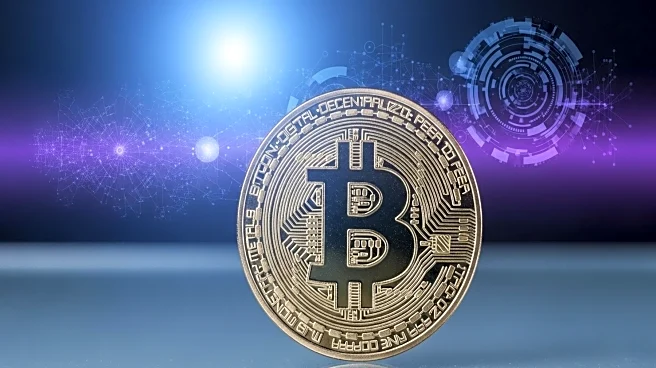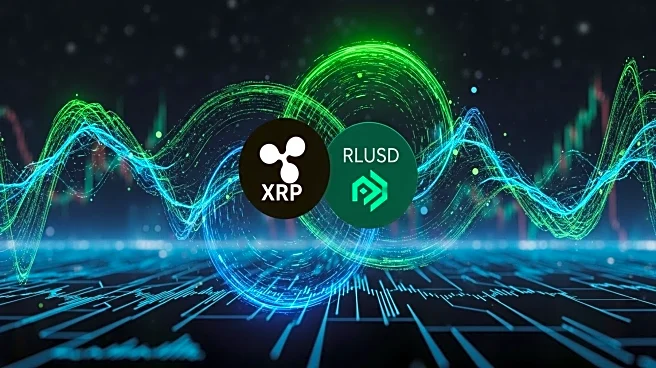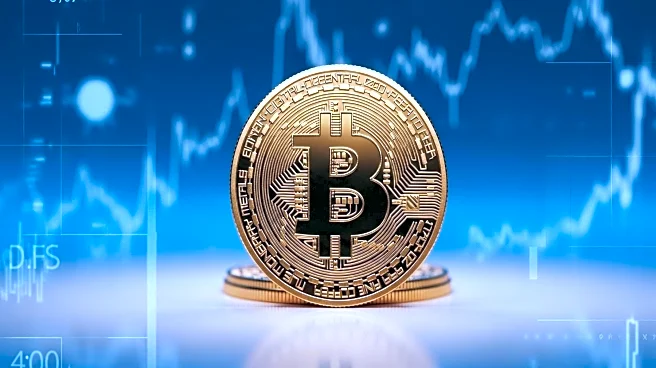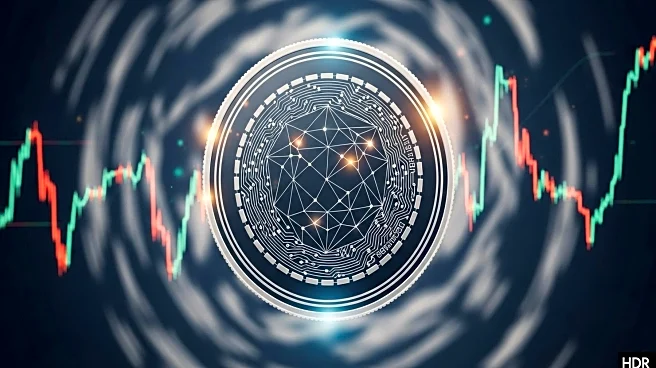What's Happening?
XRP, a prominent cryptocurrency, is navigating a complex landscape marked by macroeconomic pressures and regulatory shifts. The U.S. Securities and Exchange Commission's reclassification of XRP as a commodity in March 2025 has unlocked significant institutional capital, boosting its market cap. However, XRP's reliance on macroeconomic conditions makes it vulnerable to volatility. Recent economic indicators, such as the Producer Price Index report, have led to sell-offs, highlighting the asset's sensitivity to inflation and interest rate expectations. Despite institutional adoption, XRP's lack of staking mechanisms increases the opportunity cost of holding the token compared to yield-generating assets like Ethereum.
Why It's Important?
The developments surrounding XRP are significant for the broader cryptocurrency market and financial institutions. The SEC's regulatory clarity has facilitated institutional investments, potentially stabilizing XRP's market position. However, the asset's dependency on macroeconomic factors, such as Federal Reserve policies, poses risks. If inflationary pressures persist, XRP could face renewed sell-offs, impacting investor confidence and market stability. The duality of strong institutional demand but weak organic usage underscores the challenges XRP faces in maintaining its relevance amid competition from stablecoins and central bank digital currencies.
What's Next?
XRP's future trajectory will depend on several factors, including regulatory continuity, Federal Reserve policy alignment, and utility expansion. Investors and stakeholders will closely monitor economic indicators and Fed decisions, as these will influence XRP's market dynamics. The potential for further institutional adoption and liquidity improvements could bolster XRP's position, but the asset must navigate technological competition and macroeconomic volatility to thrive.
Beyond the Headlines
The situation with XRP highlights broader themes in the cryptocurrency market, such as the impact of regulatory clarity and macroeconomic conditions on digital assets. The asset's fragility serves as a reminder of the importance of strategic risk assessment in a maturing market. As cryptocurrencies continue to integrate into traditional financial systems, their resilience will be tested by economic shifts and technological advancements.











